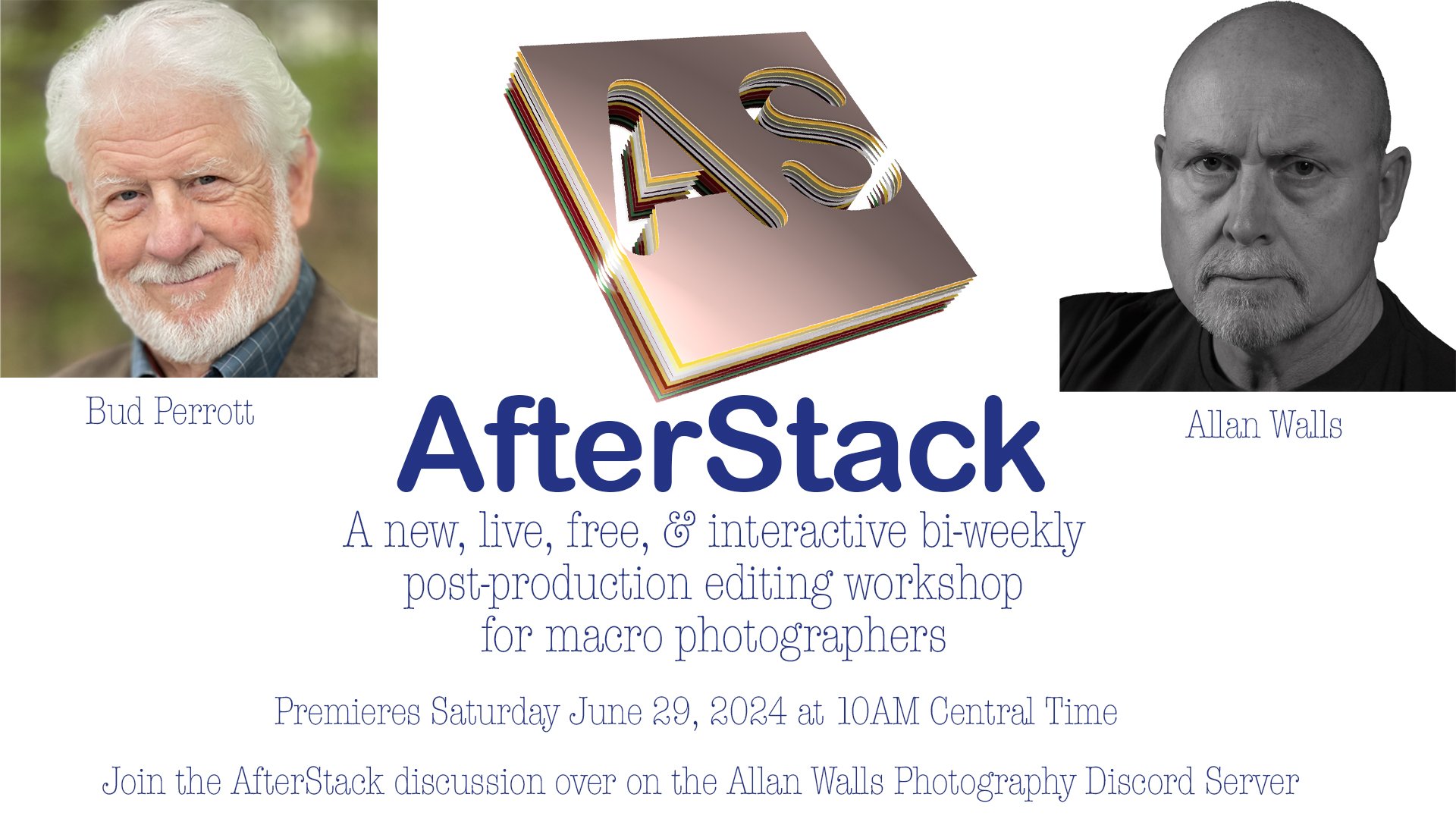Opportunity
/and the link - https://youtube.com/live/FI077RES2N0?feature=share
So, the theme for this week’s brace of livestreams is “Opportunity”.
I came up with this idea over the weekend, when I was trying to juggle an overly optimistic production schedule with my yearning to be outside in the sun and sea breeze with a camera in hand. I kept trying different ways to organize the schedule that would leave a gap for some “shutter time” - not to be confused with the also pleasurable going out to shoot stills or video for work. B+No, all I wanted was time to walk around outside, preferably in an unfamiliar corner, to see what I might find. But I kept coming up with the same bottom line - there was no free time that would give me the opportunity to get outside.
But it was that thought that stuck with me, and as I worked through the day’s fixed obligations, a morning Pzoom meeting followed by, what turned out to be, an incredibly helpful Tangent show - something about waiting for “Opportunity” to “give me” the time to do what I wanted to do. Who is this “Opportunity” and why is my day at the mercy of his or her temperament in judging whether or not I should be allowed to go outside. It struck me that I actually spend quite a lot of my time patiently waiting for “Opportunity” to give me permission to take care of myself.
green on green
What if “Opportunity” was less like a demanding taskmaster and a little more like a useful tool - something I could take down from the shelf when I needed to, and use in the way that benefits me and, by extension, the people who find something of value in my work? In other words, why couldn’t I take opportunity instead of waiting for it to be given, and if it wasn’t close by, why couldn’t I just make some of my own?
And that is what I want to talk about this week… how less than 60 minute, taken selfishly from my weekend schedule turned out, the benefits it bestowed and how that hour impacted the remainder of the weekend. Understand that I have been wanting to get out into the swamps to search for the ridiculously hard to find (around here, at least) - Sesbania herbacea, AKA, swamp Sesbania, hemp Sesbania, coffeeweed, and many others. It is a wild legume in the same family as the pea, Fabaceae, and it is native to the southern and southwestern US. One of its most recognizable features is its foliage, long stems with paired lance-shaped opposing leaflets, which is pretty unmistakable and shown here. My interest in this plant is actually more of a fascination with a tiny species of beetle, a member of the Curculionidae, that is born, lives, and dies in and around this species, and only this species of shrub.
Eudigogus pulcher - “The Most Beautiful”
I am talking about the breathtakingly gorgeous Sesbania clown weevil, and insect that has become a regular part of my summer since moving down here. As the likelihood of my leaving this area in the not too distant future increases, the thought of leaving behind this, and a few other species is a source of some sadness. Eudiagogus puncher, whose scientific name was taken from the Latin could be literally translated as “the most beautiful” could not have been given a more apt moniker. It is, up close, and personal stunning creature to behold. With its gentle rounded curves, floppy, drooping antennae and large clumsy looking weevil-feet already in place, all it needed was some eye-catching ornamentation. And this it has in abundance!
The clown weevil is, like many beetles in the Curculionidae, covered in scales. The majority of them a re small oval and almost translucent, but appear black because of the dark layer of chitin to which the scales are fixed. But covering the beetle from head to tail and even extending down the appendages, is a regular reticulated series of broad bands of glittering, multicolored gemstone-like scales that are difficult to describe adequately. When the insects emerge from the soil where they have lived as larvae for most of their lives, and first climb the stem of the plant that is to be their home, the scales are predominantly red with a scattering of orange, yellow, green and blue scales. But as they age, the colors become more variegated with the reds diminishing markedly and the blues and greens becoming more dominant. But to the naked eye, these unassuming little beasts are drab, dark beetles of only a few millimeters in length, probably not earning them a second glance. When the sun catches them from just the right angle, though, they sparkle like the precious gem they are. I could go on but will spare you - a picture will do a better job than I could. Looking at the scales under magnification they take on the character of some exotic kind of opal, with shimmering internal facets underlying a smooth translucent surface. The color is not a result of pigment within the scales, but instead a manifestation of refraction of the light bouncing off the hundreds of tiny photonic discs that make up the internal structure of the scale.
One interesting observation I made when first introduced to this species was that the weevils completely lose their color when damp, becoming uniform black even under high power magnification. Dying the weevil will have little effect until most of the water has evaporated, at which time the scales begin to light up, one at a time, in a most remarkable display of color. It looks exactly as if the animal was covered in thousands of microscopic LEDs in every color pf the rainbow, that are being switched to full power, one by one. This is something that you should not miss witnessing for yourself. If you live in a region known to be home to this plant, you should find it and then narrow your search to plants with leaves that are covered in small round holes - find the holes and you have found the weevils, but your task is not done. Catching them is a challenge. They are experts at hiding themselves. But they have an Achille’s heel, that by coincidence is also part of the foot. When they see us coming they immediately put the plant stem between them and us. This maneuver keeps them almost completely out of sight, but for their big furry feet which can be spotted easily with practice, gripping the opposite side of the stem. The only other times I have been able to find them is as they sleep, when they can be found inside the leaves of the Sesbania, which close at sunset to leave a convenient sleeping place for the weevils, and when they mate. And they mate A LOT. It is not uncommon to find a row of three or four interlocked weevils, with the most recent participant piling onto the back of the rearmost, and probably confused of the frustrated suitors. Other than eating Sesbania, this frenzied coupling appears to be their sole waking activity.
You have to watch the stream to know what this ugly thin is!
And that is why I wanted some time off during the sunny part of the day on Saturday. I needed to find a new habitat in which to locate these insects. The only place I had ever seen them was in a single large Sesbania plant, the size of a small tree, located on a bus highway half an hour north of my home and that is where I planed to start my search.
If you want to know what happened, what it has to do with dragonflies and how close I came to mossing out on all of it, then join me this evening at 8PM central time for Macro Talk, and I will tell you. You may also want to drop by on Thursday afternoon at 2PM for Macro Talk Too, where we will be celebrating our 100th Macro Talk Too (our 200th show!) and talking about the weird idea of making a life of macro photography. Should be a lot of fun.
There is not Pzoom this Saturday, but you aren’t getting off the hook that easily - this weekend is our first episode of AFTER-STACK - a post-production, free workshop for macro photographers that Bud Perrott and I have been thinking and talking about for a long time. It is very much a discussion, not a lecture, and we want you to come by, ask any questions you have, or show us when there is a better way to do something. Bud is one of the most accomplished post=production experts that I know and his work in macro has been amazing. But he and I take some pretty different approaches to the same problem and it makes for some interesting discussion.
To learn more, there is a place over on Discord, on my server, where you can go to talk about anything related to the new AFTER-STACK show. This would also be a great place to drop off any images you want help with or have questions about - get them in soon - we will be taking images form Patreon members first. Patreon supporters will also have access to Bud and I through the Discord Patreon VIP lounge - more gapped reasons to consider joining the gang. If you want to learn more about Patreon, come over to www.Patreon.com/allanwallsphotography and we will tell you everything you need to know. Here is your link - you need this to get in on Saturday!
Allan Walls is inviting you to a scheduled Zoom meeting.
Topic: AFTER-STACK macro editing workshop
Time: Jun 29, 2024 10:00 AM Central Time (US and Canada)
Join Zoom Meeting
https://us02web.zoom.us/j/6916802815?pwd=TS9tZi9ZL1NXeVUvOUF4eTg5YjdlZz09&omn=81590617707
Meeting ID: 691 680 2815
Passcode: 678122
Also tonight, big announcements about a couple of coming attractions scheduled for the very near future.
A word to the wise… if you are thinking of adding a copy of Lester lefkowitz’s “Closeup and Macro Photography” to your library (which is a very good idea because it is a very good book), then you might want to act fast. Since first mentioning that I was reading these two volumes and that I was as impressed as could be, they have been disappearing from Amazon’s shelves at a steady rate. I am into the second volume and my enthusiasm grows with every chapter, so in the run up to my conversations with Lester I will probably talk more and more about what I am seeing and the remaining stock will continue to dwindle. Lester printed a very limited run of these volumes and I doubt that what Amazon still has will cover the demand - just saying. Oh, and if you live in one of those places that Amazon will not visit (examples include, Jupiter -all zip codes, undersea thermal vents, active volcanos, the Van Allen belt, and Norway), Lester has directed you to Bay where he will sell you the book and get it shipped, or teleported to you. For everyone else, just use this Amazon Affiliate link (your doing so may earn me a small commission because that’s what an affiliate link is)
https://amzn.to/4bztPPX for Volume 1 and https://amzn.to/45CJCMr for Volume 2









